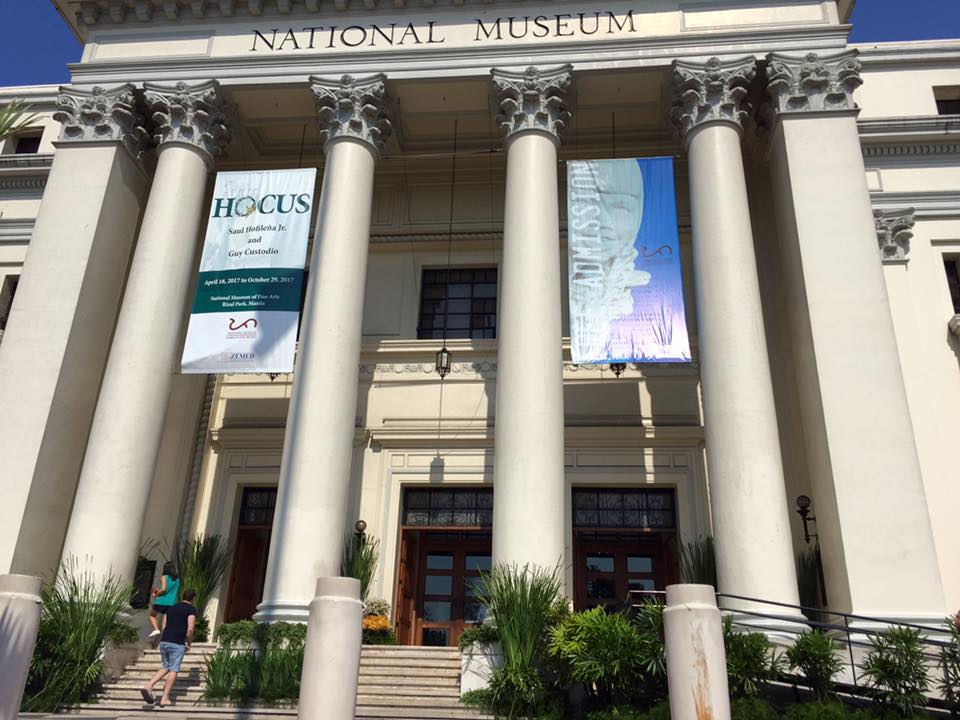Philippine News
Weaving demos at National Museum slated Oct. 7-8

The weaving demonstrations are part of the Senator Loren Legarda Lecture Series on Philippine Traditional Textiles and Indigenous Knowledge, which was launched in 2012 coinciding with the opening of the Hibla ng Lahing Filipino gallery. (Photo: National Museum of the Philippines/ Facebook)
MANILA— Weavers and embroiderers from Abra, Ifugao, Ilocos Norte, Laguna and South Cotabato are at the National Museum of Anthropology on Oct. 7-8 to share their traditional and indigenous knowledge with the public.
The weaving and embroidery demonstrations were organized by Senator Loren Legarda, with the support of the National Commission for Culture and the Arts (NCCA), the Philippine Fiber Industry Development Authority (PhilFIDA) and the National Museum.
Among the demonstrators are Inabel weavers Irene Abucay and Clarita Madarang, who were trained by National Living Treasure for weaving Magdalena Gamayo from Pinili, Ilocos Norte; ikat weavers Angelina and Sammy Buhle from Hingyon, Ifugao; Tingguian embroiderers Librada Donato, Norma Mina and Normandino Mina from Peñarrubia, Abra; piña embroiderers Lorna Trillana and Irma de Robles from Lumban, Laguna; and t’nalak weavers Haide Forod and Nida Menson from Lake Sebu, South Cotabato, who were taught by the late National Living Treasure for weaving Lang Dulay.
The weaving and embroidery demonstrations can be viewed on Oct. 7 from 3 p.m. to 5 p.m. and on Oct. 8 from 10 a.m. to 5 p.m. at the Reception Room, Fourth Floor, National Museum of Anthropology (Old Finance Building), Ermita, Manila. The demonstrators will also have products for sale.
Aside from the demonstrations, guests may also visit other galleries in the museum: Hibla ng Lahing Filipino gallery, Rice, Biodiversity and Climate Change exhibit, Baybayin gallery, Baskets and Mats exhibit, Bangsamoro gallery and the Gawad Manlilikha ng Bayan (National Living Treasures) gallery, to further enrich their understanding of indigenous and traditional Filipino knowledge.
The weaving demonstrations are part of the Senator Loren Legarda Lecture Series on Philippine Traditional Textiles and Indigenous Knowledge, which was launched in 2012 coinciding with the opening of the Hibla ng Lahing Filipino gallery.
The Hibla gallery, a brainchild of Senator Legarda, is the first permanent textile gallery in the country. It houses the National Museum’s extensive textile collection, such as the Abel Iloko from Vigan, Tingguian blanket from Abra, Gaddang garments from Ifugao, textiles from Polomok, South Cotabato and Maranao garments from Southern Mindanao, to name a few.
Weaving looms, including those from Senator Legarda’s personal collection, are displayed in the galleries; while Wyg Tysmans’ photos of indigenous people wearing their traditional garments decorate the walls of the museum.
Senator Legarda, a staunch supporter of art and culture, said she hopes through these constant efforts to highlight the various aspects of our culture, more and more Filipinos and even other nationalities would be interested to learn about Philippine heritage and interact with traditional artisans, indigenous peoples and also contemporary artists who keep this rich heritage alive.
“Our pride in being Filipinos fundamentally begins with the awareness of the beauty of the Philippines — the land and its people — our heritage, and this textile museum will be a testament to the greatness and richness of the Filipino culture,” Legarda said.





















